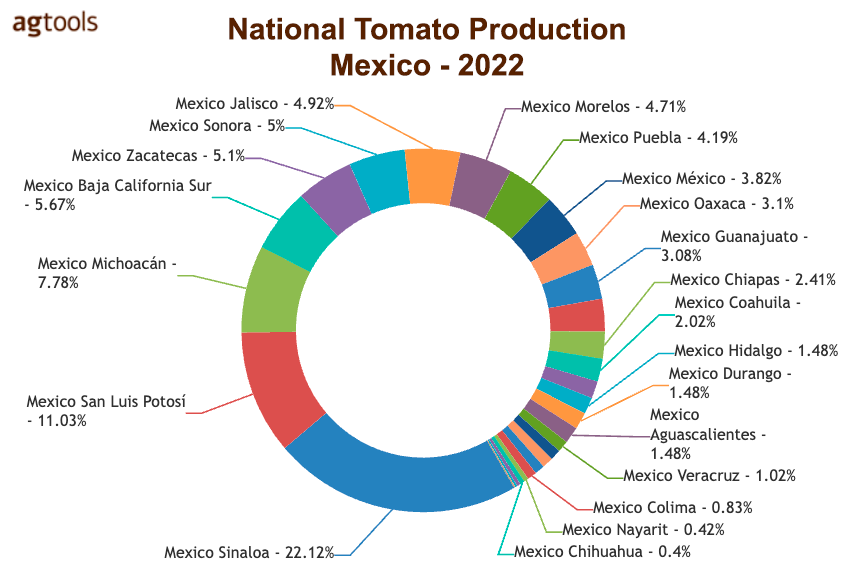By Paola Ochoa, AgTools
The tomato is one of the most widely used fruits in world gastronomy, indispensable for cuisines such as Italian or Hispanic. Its origin goes from Mexico to South America. However, its domestication took place in Mexico.
The Mexica knew it as xīctomatl, a Nahuatl word that means “fruit with a navel”. Although the exact date of domestication is unknown, it is estimated to have occurred around 500 BC.

Its use is infinite: Tomatoes are used to prepare all kinds of red sauces, broths, and stews and can also be eaten raw in slices, roasted, or cooked. It is the soul of Hispanic gastronomy.
The properties of the tomato are very beneficial for health. It contains vitamins A, B1, B2, and C and provides minerals such as calcium, phosphorus, potassium, and sodium; medicinally, it is antiseptic, alkalizing, depurative, diuretic, digestive, laxative, anti-inflammatory, and remineralizing. It is helpful in liver disease, burns, obesity, and rickets and helps fight various forms of cancer.
The tomato contains a critical amount of potassium needed for muscle contraction and nerve function. Proper kidney and digestive system functioning requires it.
Related Article: Avocado Earns Its Place as a Consumer Favorite
The Commercialization of Tomatoes Continues To Grow
The marketing of roma tomatoes in the United States increased from 2000 to 2022, from 772 million to 2,362 million kilograms.
In the first half of 2021, the United States marketed 1.11 million pounds of roma tomatoes. By 2023, the amount had increased to 1.28 million pounds, showing a 16% increase, particularly in May and June.
Of this tomato, 96.5% comes from Mexico and Florida, with 86% and 10.5% of the market share, respectively. Mexico maintains its production year-round, meaning consumers can enjoy this fruit regardless of the season.
In Mexico, production is mainly in charge of the state of Sinaloa, with 22% of the total volume produced, being the municipalities of Culiacan and Navolato, with 4.87% and 3.99% of the national production, respectively.
On the other hand, Florida has decreased its production by dropping from 222 thousand pounds in 2021 to 207 thousand pounds in 2022, which meant a 7% drop in the last year. The following graph shows that, unlike Mexico, Florida cannot produce tomatoes year-round.
The 16% increase in the volume of tomato traded in the first half of the year by the United States compared to 2022 has been reflected in a lower price of this fruit at the border with Mexico this year, mainly during the first two weeks of May.
Virtually no Hispanic home lacks a dish with tomato as one of its main ingredients, and today, it is present in all the cuisines of the world and is indispensable in many of the recipes we have inherited from our ancestors.






